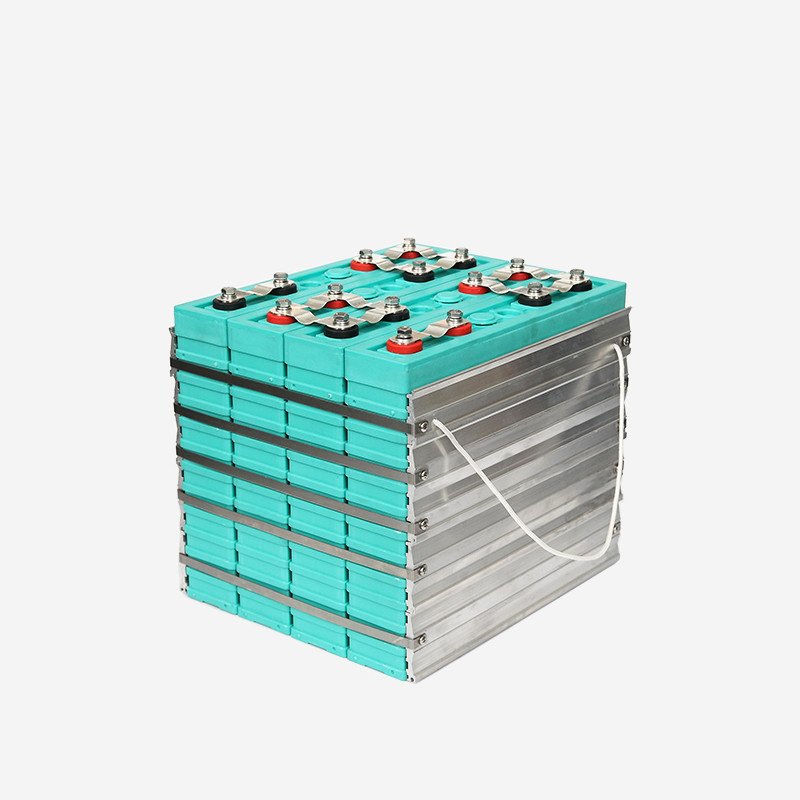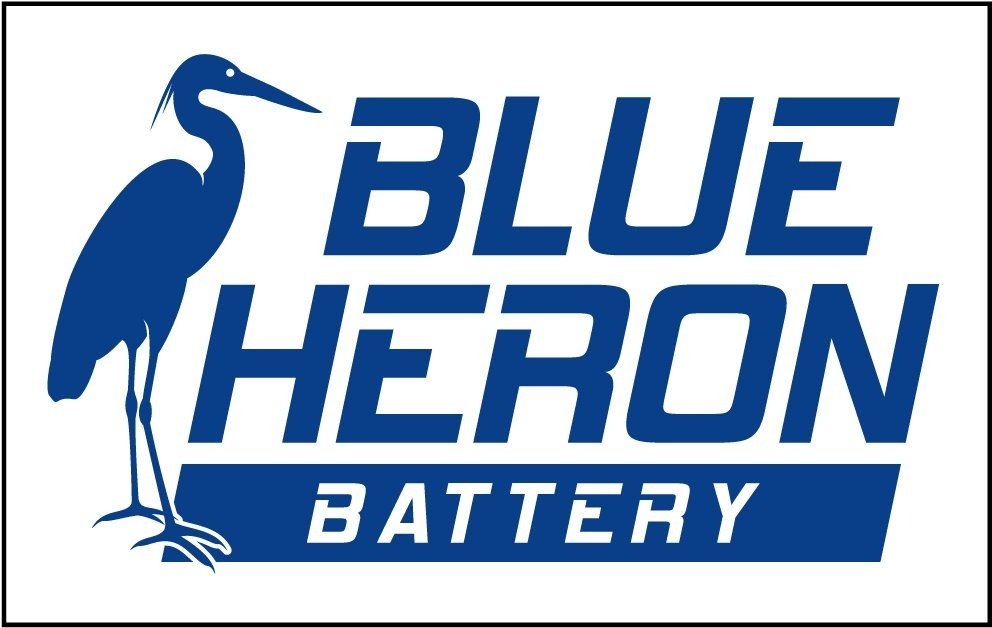4. Sizing Your Lithium Battery Bank
By the Blue Heron Tech Support Team
(This technical article is the property of Blue Heron Battery LLC and may not be copied or reprinted in whole or in part without the express permission of Blue Heron Battery LLC.)
It is important to size the battery bank just large enough to cover your projected cycle needs (usually a full 24-hour day), plus some additional margin to allow for loss of battery capacity due to age for those periods. And one needs to be careful not to overdo it and put in too large a bank that even on the light-use cycles/days one is only using the top 5 or 10% of capacity, as with lithium batteries one can be shortening life by continually discharging and charging in that top 10% capacity range. We’ll provide recommendations on that margin, considering both sides of the issue noted above.
And last, what assumptions does one make when converting from an existing lead acid (regular wet cell or AGM) to a lithium battery bank.
1. Battery Bank Peak Demand – “Computed Approach”
There are many good articles out there on the process to go through to compute your peak daily demands. For a blue water or coastal sailing yacht, it might be a period where one is on autopilot for 24 hours, running radar and full instrumentation, running lights, electric heads, fresh water pumps, microwave, refrigeration and freezer, with regular openings, and maybe ignoring any benefit from solar or a generator. Or for some it could be relying on several hours of air conditioning when arriving in port or at anchorage.
For an RV it would be those days you want to be in a secluded location, off the grid, but enough power for the toys, like flat screen TV, DVR, coffee-maker, refrigerator and freezer, electric toilets, electric stove and oven, lights, fans, and maybe an hour of AC before going to bed. Also ignoring any benefit from solar and not counting on generator functioning – maybe you just want that peace and quiet.
Whatever your peak demand days will be, those are the ones you want to accurately compute the total amps and hours of usage for each load, and the total Amp-Hours (Ah) for that peak demand day. This can be a bit of work but is worth the exercise so your system is sized adequately. Let’s call this the “Computed Approach” to peak demand.
Here is a good worksheet West Marine publishes to compute peak daily DC electrical loads for your boat. We recommend using the sections to compute DC electrical load (through Page 2). Then establish how many days you wish to go, or fraction of a day, before you have to use charging ability to recharge the batteries to close to full capacity. West Marine Electrical Worksheet Their guidance on sizing a battery bank is appropriate and very good for AGM or regular lead-acid, but not for Lithium. At least use the worksheet to determine peak electrical demand through the “Computed Approach.”
To compute peak DC demands on your RV, one can use the above worksheets as well. And, here is a very good article that covers some of the basics on electrical terms and formulas., and guidance on some of the peak DC demands on your RV. And, include DC demands for powering AC loads through an inverter. How Many Amp Hours Do I Need for My RV (calculate it HERE) – Decide Outside – Making Adventure Happen
Once you have a computed peak demand capacity for your peak demand period (fraction of a day, full day or multiple days, depending on your desired peak period to rely on only batteries before charging), our recommendation is to size your Lithium battery bank at between 170% and 200% of that peak demand. So, multiply your Computed Approach peak demand capacity by 2.2 and 2.75. Install a battery bank that is between the resulting values.
[Example 1: So, let’s say you have for example determined, through the “Computed Approach,” that you need 120Ah for your peak demand capacity. Applying the 2.2 and 2.75 factors, we compute having a desired Lithium battery bank capacity of between 264 and 330 Ah, as Shown in Table 1 below. This can be satisfied by using (3) Blue Heron 105Ah batteries connected in parallel, whether our drop-in variety or our 4-cell pack variety.
One of the questions that might be asked is why, if we compute we only need X Ah’s, then why do we need a battery rated at 4 times that in the case of AGM’s and 2.2 to 2.75 times that for Lithium. So our answer is: This does several things. It allows for uncertainty in the calculation, such as maybe missing some loads, not fully accounting for the full loads such as line losses in long wire runs, allowing for some growth in loads over time as new equipment is added to your RV or boat, in the case of AGM’s it allows for having only 50% of the capacity effectively available (drawing below that level rapidly ages the AGM battery), and last is that as a battery ages due to many cycles of use and loses some capacity, you want to preserve sufficient capacity to accomplish the load functions that are demanded for as long as is practical. So, the above factors for AGM’s and Lithium batteries are based on many years of practical experience in using these type batteries.
2. Reference Approach
So, for the above discussion we base our recommendation on battery bank sizing on computation of theoretical peak load conditions. And, then sizing the battery bank a bit larger than that for various reasons noted above. Another approach is a practical and less computational approach, and that is to rely on experience with an existing AGM or regular wet cell battery bank. If a prior owner or you have some years of experience with the house bank size in your boat or RV, assuming that is not just in its last years of life, but when it still had a reasonable per cent of its capacity, then you have a pretty good base to rely on.
If the existing AGM battery bank size has served you well, covering the loads for your desired period, say a 24-hour period, before getting below 50% capacity once the battery bank is a couple years old, then you can use that battery bank size as a good reference for sizing your Lithium battery bank. Note that AGM batteries are good for about 500 to 550 cycles to 50% capacity. If still early in that life, then they can be a good reference.
We recommend that if an AGM battery bank has performed adequately as described above, then a replacement Lithium bank that is between 0.6 and 0.7 times the AGM battery bank rated capacity should perform fine for many years for you. If cared for properly the Lithium battery bank will outlive AGM battery banks several times over. From our tests, depending on the Lithium battery you select and how you care for it, a Lithium battery bank will outlive 4 to 7 replacements of an AGM battery bank.
[Example 2 – Let’s say I have an RV (or boat) with a 650 AH AGM battery bank that when new and for its first few years of life, was sufficient for my house loads and I am not planning to add to those loads. Using the above guidance, to convert to a Lithium house bank using the 0.6 and 0.7 factors, I would need a Lithium house bank of 390 to 455 Ah. This can be accommodated by using (4) of the Blue Heron 105 Ah batteries wired in parallel, or (2) of the 210 AH batteries.]
3. Example Table of Values
Table 1 incorporates both guidelines, depending what method you choose to use. Have practical experience is worth a lot and when available we recommend using that. If you have the time and comfort level you might still double check that “Reference Approach” by calculating your actual peak load needs. You may find that the calculation (“Computed Approach”) is overly conservative and ends up suggesting more capacity than what you experienced from practical use of your boat or RV. If funds are available you could choose to go to the next larger size. But, be careful with this as you can get into a situation where you cause a battery bank to age faster than it would otherwise because of the top-charging issues with Lithium batteries (accelerated aging of the battery by regularly cycling the battery in the upper 10 to 15 % of its capacity). This can be OK on a limited but not on a routine basis.
Last be sure to pay attention to charging systems and their capability to address Lithium. As well as the total charging rate the Lithium batteries can accommodate. You might upgrade your charging system to increase charging rate, and have less annoying running of a generator. As long as the batteries can handle it, and of course the charging equipment like alternators can take it. Pay close attention to Lithium battery and charging equipment specifications in making these decisions. We address charging issue in other articles and in more detail in your Blue Heron Battery Owner’s Manual.
4. 12V vs. 24V DC
The above reference material and computations work the same for 24V as for 12V. A 650 AH 24V AGM battery bank will similarly require the size Lithium battery banks shown above, for example recommended by Blue Heron to be 400-420Ah in 24V.
Our 12V batteries can be wired in series to configure a 24V battery, and then in parallel up to 4 (24V) batteries to obtain the desired AH capacity.
Note that the far Right-Hand column provides approaches to addressing the needed Lithium battery bank size if it were a 12V battery bank. For 24V, one would need (2) 12V batteries in series for each of the batteries listed.
5. Solar Storage Battery Capacity
One has more flexibility in selecting a battery bank size. For home or facility battery storage, charged by solar or by the electric grid, one determines how much autonomy they want, in terms of hours per day or in terms of days. The household electric meter can be read each day at the same time over several days and establish a typical use.
One can also do the discrete calculations noted above on loads of various appliances. Once balanced against budget, one may opt for a lower capacity. Our drop in batteries or discrete cells may be used for this purpose. Greater efficiency in inverters will occur if batteries are arranged in series for higher voltage.
Traditionally, those seeking to be off-the-grid have used AGM batteries as the original cost is lower to get into such a project. Over time more are gravitating to Lithium for his purpose, as Lithium prices have come down and as folks realize the higher life cycle cost of AGM’s. Replacing AGM’s 5 to 7 times over the life of one set of Lithium’s causes one to re-evaluate their strategy.
6. Other Resources
Here are links to other well thought out articles on this subject.
- Assembling a Lithium Iron Phosphate Marine House Bank ARTICLE
- West Marine – Electrical Load Worksheet - Energy Budget Worksheet Template1.xlsx (live.com)
- RV Electrical Load Calculator. It includes a Solar Gain Calculation sections as well, that can be used for RV’s or boats. RV Electrical Load Calculator | Boundless Power Systems (boundless-ps.com)
- Further thoughts on RV battery bank size. How Much Battery Capacity Do You Need? - RV With Tito








